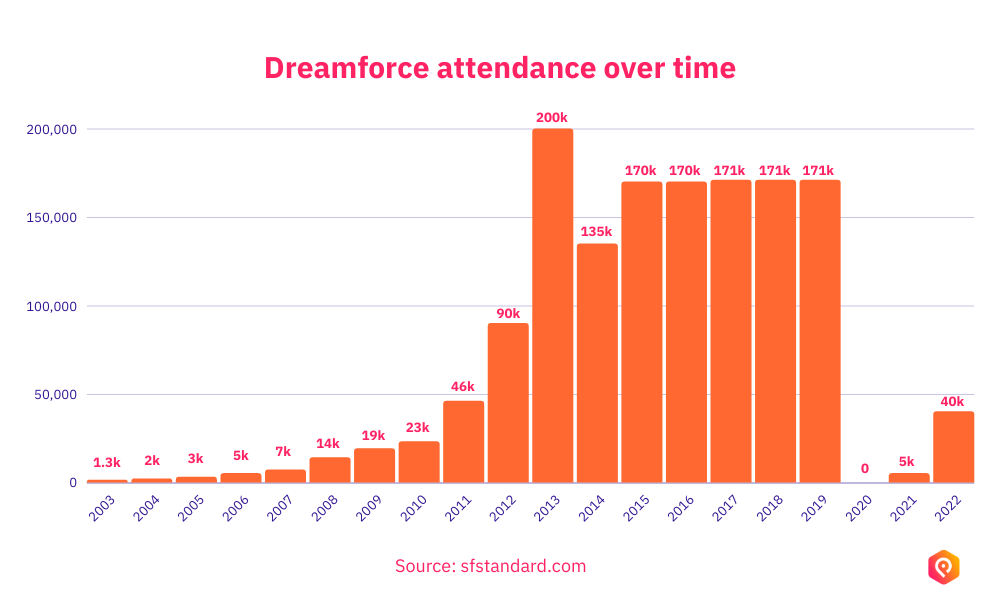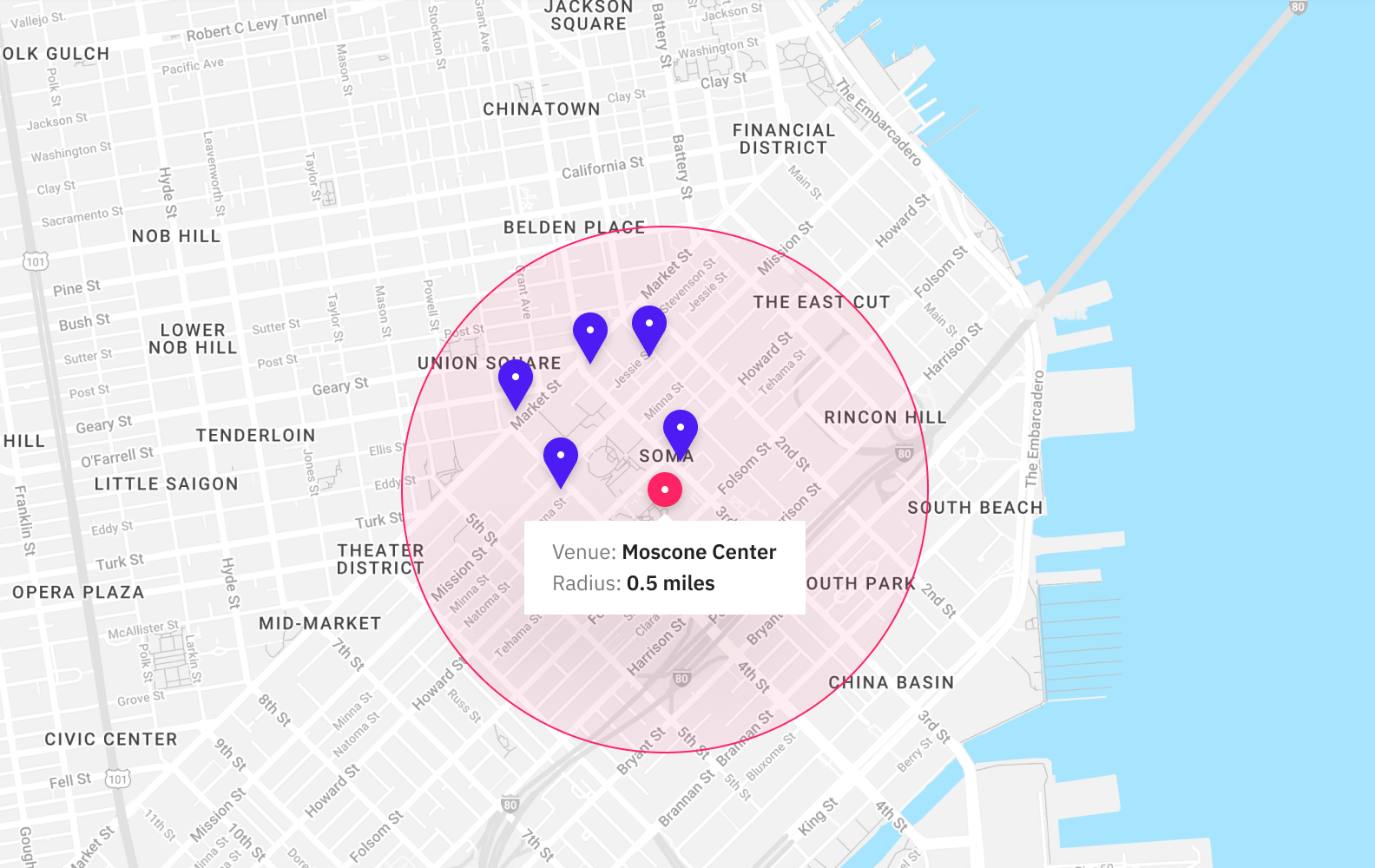How one conference drove a 190% spike in demand for lattes

Dreamforce and other business events are a boost for San Francisco’s economic core
Dreamforce is the largest software conference in the world. A recurring event hosted by Salesforce at a different time every year, Dreamforce brings together the global community to discover new innovations from the company. Since 2003, Salesforce has hosted this event in San Francisco with an audience that has grown to over 170,000 attendees as of its 2019 event – which took place in September that year, just months before the world was hit with a pandemic that threatened the entire corporate events market in the US. Once COVID swept the globe, Dreamforce was forced to go virtual in 2020, generating 86% less in direct spending on events at the Moscone Center, down from $1.9 billion to $275 million.

Before the pandemic, San Francisco’s convention and conference industry drove $4.9 billion of overall economic impact, resulting in nearly $500 million in tax revenue for the city. Moscone Center, the event’s venue, accounted for roughly 20% of San Francisco’s entire $10 billion tourism sector (Source). That’s one venue. This is a reflection of the travel, accommodation, and retail spending in the city leading up to and during conferences such as Dreamforce – especially for one particularly popular coffee shop located nearby.
Let’s take a look at how the event drove a massive spike in sales for the shop’s locations within walking distance of Moscone Center, and how you can take advantage of opportunities like these by identifying and planning ahead for demand-driving events near your business locations.
Dreamforce drove a 190% spike in demand for skinny lattes
In order to understand the catalyst behind spikes in demand down to the menu-item level, the coffee shop’s operational team used PredictHQ's Demand Analysis Tool, which accurately reveals the events that drive demand for restaurants, retailers, and more.
The tool combines and correlates PredictHQ’s intelligent event data with your transactional demand data, turning months of data analytics work into seconds. Aggregating the data at scale means your data science team can view a high enough volume of spike days to prove consistent correlations between demand and certain types of events.
The coffee shop wanted to better understand how Dreamforce influences demand for their San Francisco locations, of which they operate five within 0.5 miles from Moscone Center, where Dreamforce is held. In the map below, Moscone Center is represented by the pink marker, and the coffee shop locations are represented by the purple pins:

The Demand Analysis results revealed up to a 140-190% increase in demand for skinny lattes during the Dreamforce conference. Furthermore, this correlation between the boom in foot traffic brought in by the conference, and this spike in sales for skinny lattes was surprisingly proven to be consistent across the span of multiple years:

While restaurants within walking distance of the Moscone Center would most likely have already increased their staffing and inventory in preparation for the highly-anticipated annual event, being aware of the true extent of the increased demand during this time would power their ability to:
Prevent being understaffed on days when demand picks back up, and costly overstaffing for days when demand is low
Avoid wasted food inventory by ordering enough of each food and drink item for each day
Keep customers coming back with a consistent and positive guest experience across locations
For quick-serve restaurants of all kinds, matching these elements with local demand results in significant savings by preventing food wastage and unnecessary employee expenses such as overtime pay. Currently, challenges such as inflation, labor shortages, and supply chain have created a business environment which is hypersensitive to demand fluctuations – meaning it was, and remains a critical time to ensure planning is aligned with real-world demand.
Prepare for demand-driving events near you
In response to the return of travel and live events in 2022, Dreamforce came back in full force, drawing in 40,000 attendees with projections to generate $40 million for the city. Restaurants downtown reported seeing up to a 20% increase in reservations throughout the duration of Dreamforce week, in addition to fully-booked private event rooms.
Also in 2022, the economic impact of overall conventions was forecast at $400 million for San Francisco, compared to $1.17 billion pre-pandemic in 2019, a welcome change considering the city’s sluggish downtown recovery which ranked last among large cities. Despite a difficult two years for businesses downtown, with the return of demand-driving conventions and conferences, things are beginning to look up for San Francisco, and the economy at large.
Conferences are major demand catalysts that bring in millions in travel, accommodation, and restaurant spending. The U.S. corporate event market size was valued at $95.3 billion in 2020, and is estimated to reach $510 billion by 2030.

Learn more about how to track demand-driving events impacting your business locations:
Use Demand Analysis to combine event data + transactional data in seconds, not days
Use Location Insights to track three locations of interest for free, forever
Set up Notifications for instant notice of new events within your search parameters






